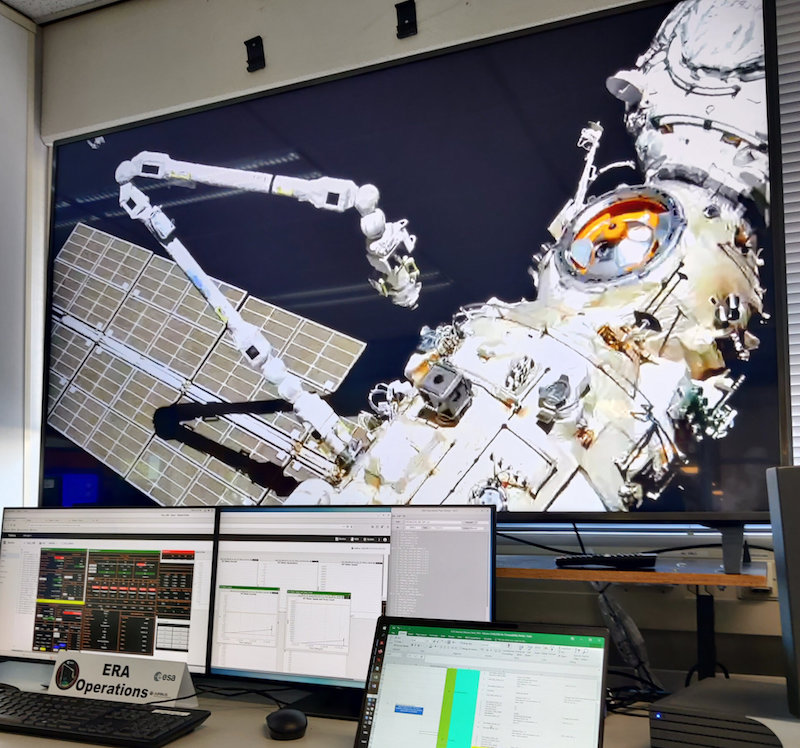
ESA marks first steps of new robot in space
While the world eagerly awaits the launch of a spacecraft to the Moon, a robot quietly reaches yet another milestone in space. The newest robotic arm outside the International Space Station woke up, stretched and moved a payload effortlessly from one side to the other of the Nauka science module.
The European Robotic Arm (ERA) successfully completed the first transfer following commands from cosmonauts inside the Space Station last week. Teams in Moscow, Russia and at ESA’s control room in the Netherlands monitored the moves, where the image above was taken by the European team on console on 24 August.
This first motion involved unleashing the payload – a single pin latch and its adapter for the cosmonaut support tool – from Nauka, moving it to the other side of the module and then installing it back to the original position.
This time the payload was just the size of a small suitcase, but ERA’s 11 m structure can manoeuvre up to eight-tonne payloads.
The whole operation took around six hours, after which the European Robotic Arm went into hibernation mode.
The test proved what the European Robotic Arm was built for: to move and latch payloads and equipment outside the Russian segment of the Space Station with an accuracy of 5 mm, saving time and work for the crew.
ERA was scheduled to continue being outfitted during the next spacewalk on Friday, 2 September, from 15:20 CEST (14:20 BST). Roscosmos astronauts Oleg Artemyev and Denis Matveev will try to finish some tasks they couldn’t complete during the last sortie on 17 August, when Oleg’s spacesuit had an unexpected battery power fluctuation and had to end the spacewalk earlier than planned.
Oleg and Denis will relocate the arm’s external control panel, remove some restraints near the two end effectors or “hands” of the arm, and test a rigidising mechanism that will facilitate the grasping of payloads.
Further tests will push the arm’s capabilities to the limit in mid-September with what space engineers call a “performance mission”. Operations will involve evaluating the performance of the brakes, joint motion and ERA’s force control. Teams on ground will also assess the quality of the images captured by the cameras on its elbows for guiding operations even during the orbital night.
Owned by Roscosmos, this is the first robot capable of ‘walking’ around the Russian parts of the orbital complex.
ERA is 100 percent made-in-Europe. A consortium of European companies led by Airbus Defence and Space Netherlands designed and assembled it for ESA. Its journey from Europe to space is “a tale of precision, teamwork and perseverance”, says ESA.
